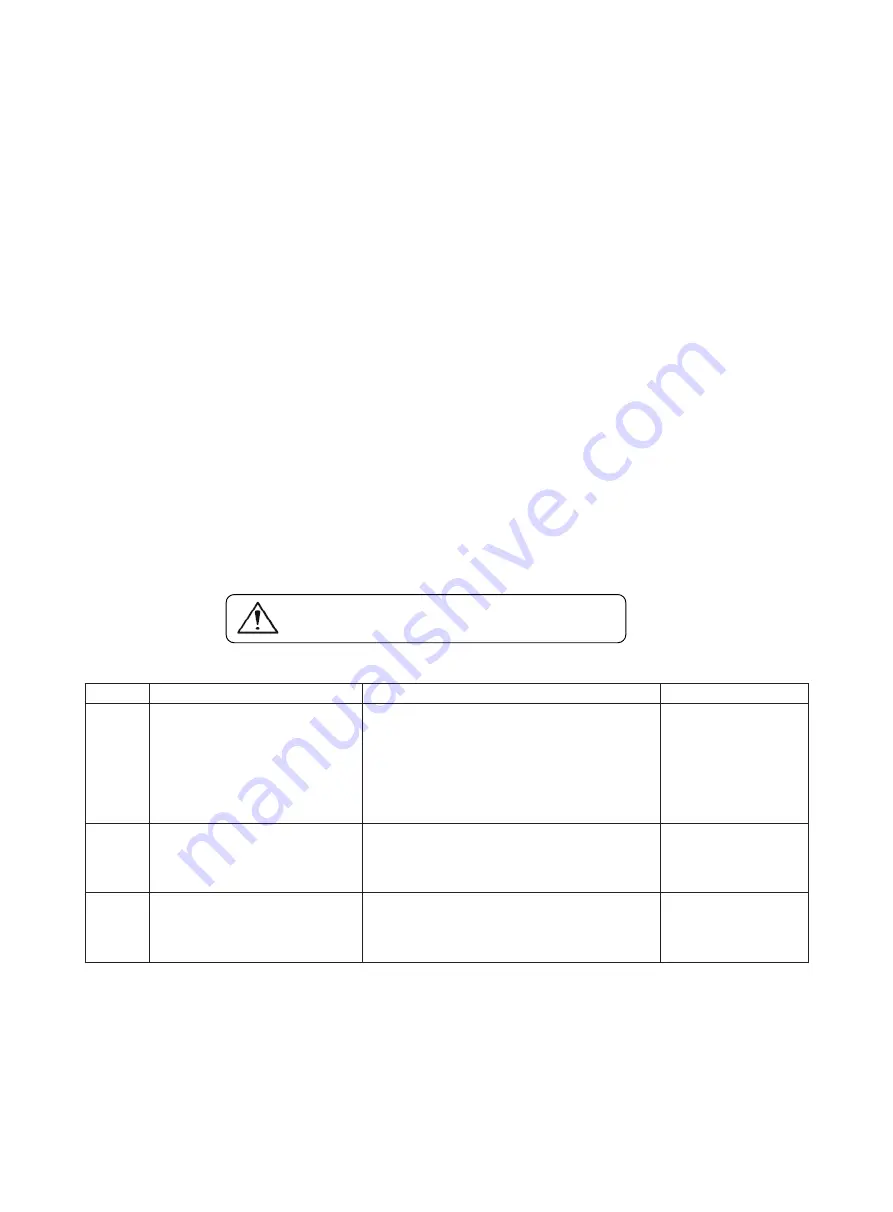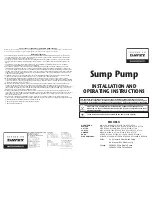
31
To ensure effective operation and durability, cleaning, washing and chemical processing are very important for
water systems. Different types of water circuits need to be cleaned in different ways.
Water Processing Method
■ Close Re-Circulation System.
Water systems of this type generally require no adjustment to subdue scale, and require no chemical to suppress
mud and alga. This type of water system is recommended. Closed recycle systems may need anti-corrosion
measures, including the following (for reference only):
NaNO
2
, borate and inhibitors for organic materials.
a. NaNO
2
, borate and silicate.
b. High density chromate solution and pH control.
c. pH and sulfite control.
d. Polyphosphate salt and silicate.
e. Alkali, phosphate and sulfite control.
Because it is hard to control water quality, for closed recycle systems, we recommend that the total density of
copper pipe inhibitors such as NaNO2, borax, silicate and benzothiazole should be no less than 1400 ppm. The
inhibitor NaNO2 is soluble in glycol, and can be used in northern areas or in the subsystem of solar power systems.
■ Open Re-circulation System.
This type of water system is generally not recommended. They are exposed to the atmosphere, and are susceptible to
scale, corrosion, mud and alga. Therefore, they might degrade the performance and reduce the service life of the unit.
■ Once-through System.
Generally, once-through systems are only used for cooling only air conditioners. Water systems of this type use
water from taps, lakes, rivers, and wells. Although the once-through system exchanges heat with the closed
water circuit, it is not considered as an integral part of the water source heat pump system. Once-through
systems may be troubled by either scale or corrosion. This type of water system requires large amount of
adjustment water. Therefore, you need to consider the scale coefficient, the equipment used for cleaning work,
and necessary anti-corrosion materials.
Caution: Using water form lake or river will
cause water problem of hydrulicsystem!
Caution: Using water form lake or river will cause
water problem of hydrulic system!
Comparison among closed recycle systems, open recycle systems and once-through systems
Once-through System
Open Recycle System
Closed Recycle System
Scale
control
1. Surface activator such as
polyphosphate salt
2. Increased acidity
3. pH adjustment
4. Other considerations include:
surface temperature, water
temperature and system cleaning
1. Discharge
2. Surface activator such as polyphosphate salt
3. Increased acidity
4. pH adjustment
5. Softening (other considerations include:
surface temperature, water temperature and
system cleaning).
No control is necessary
Corrosion
control
1. Low density corrosion inhibitor
2. Anti-CaCO
2
plate
3. pH control
4. Proper material
1. High density (200 - 500 ppm) corrosion inhibitor
2. Low density (20 - 30 ppm) corrosion inhibitor
3. pH control
4. Proper material
1. High density
corrosion inhibitor
2. Proper material
Mud
and alga
control
1. Chloridized hydroxybenzene
2. Other chemicals
3. Chlorine formed by hypochlorite
and liquid chlorine
1. Chloridized hydroxybenzene
2. Other chemicals
3. Chlorine formed by hypochlorite and liquid
chlorine
No control is necessary
■ Cleaning of the shell and tub heat exchanger.
1. Clean the shell and tub heat exchaner base on the condition of using site. When clean it, remove the cover of
water pipes opposite side, and then use a brush to clean the tubes.
2. For open recycle system, please clean the cooling tower periodically.
3. Over limit of operating high presssure maybe casued by below items besides heat exchanger dirty and scale:
Charging too much refrigerant.
Air in the system.
Water regulation valve setting problem or breakdown.
EWT of shell and tube heat exchanger too high.
















































